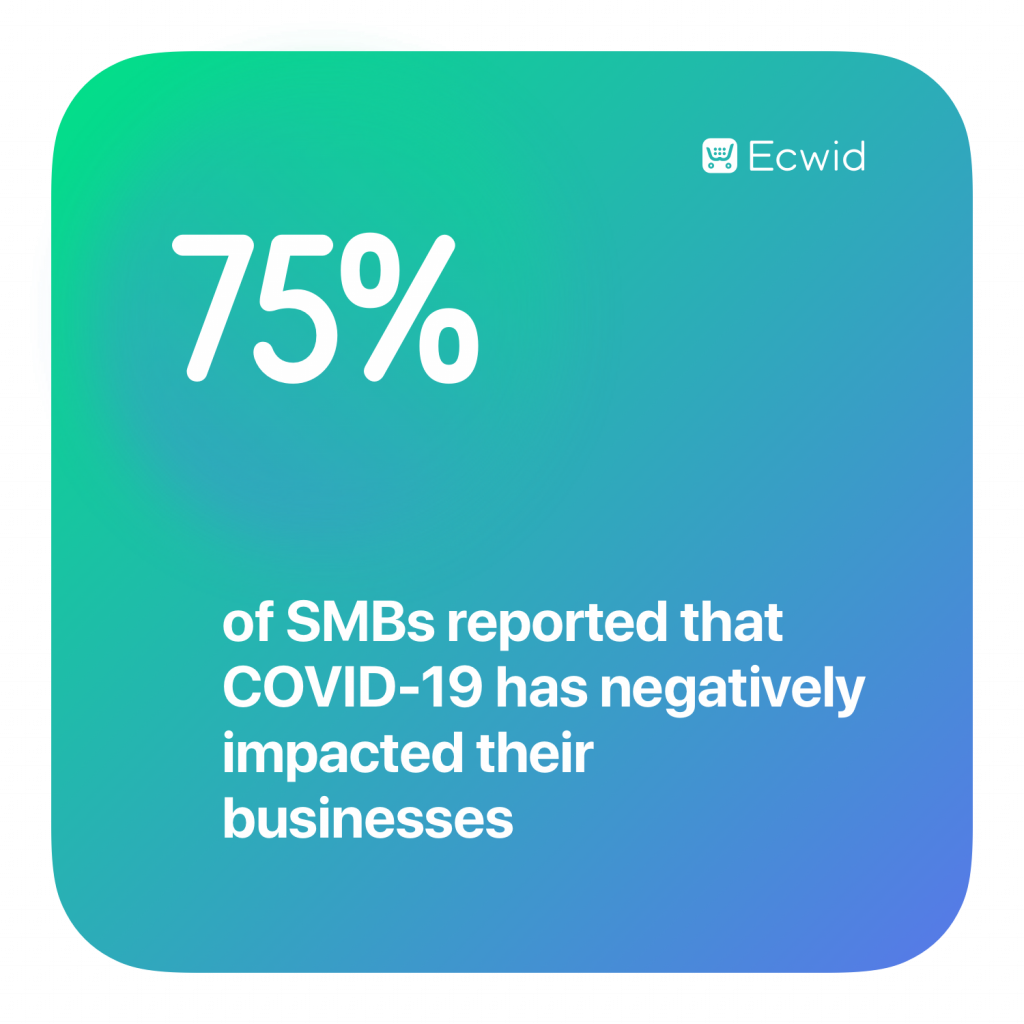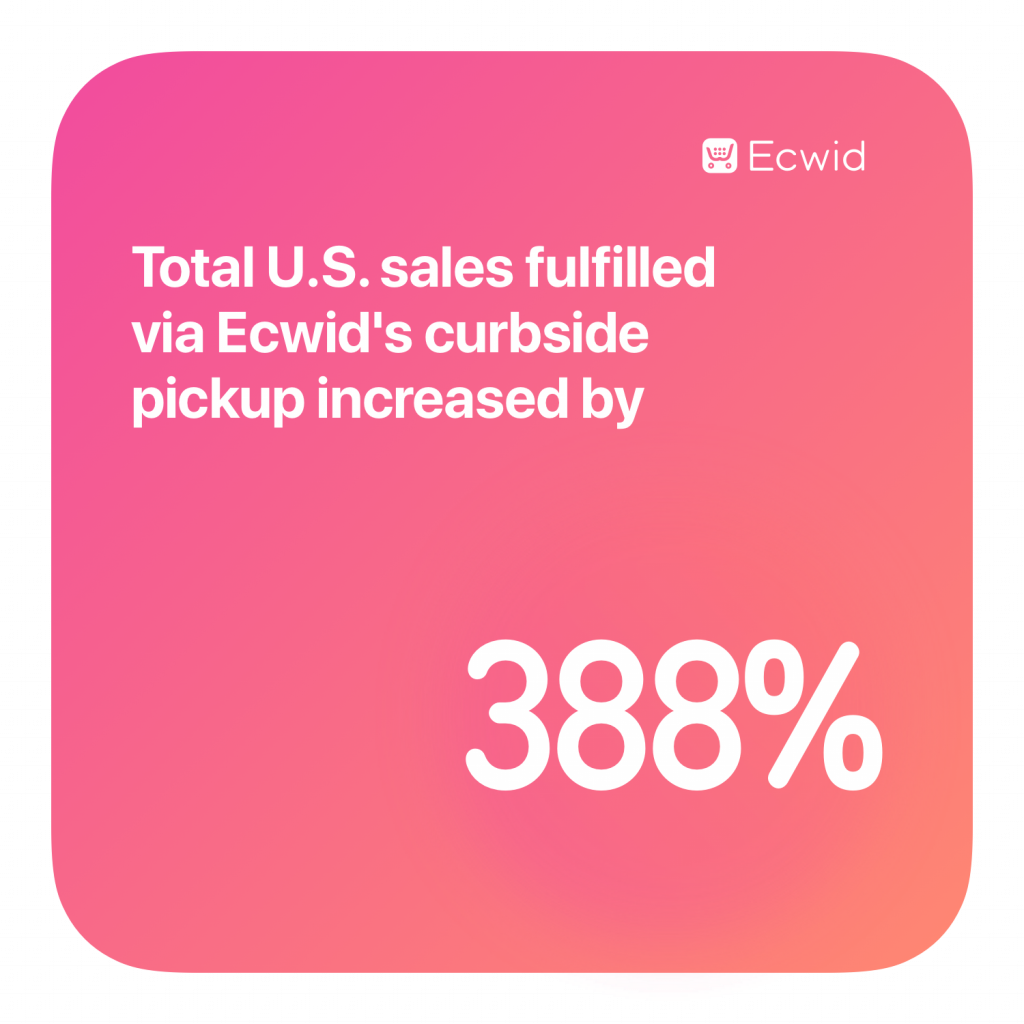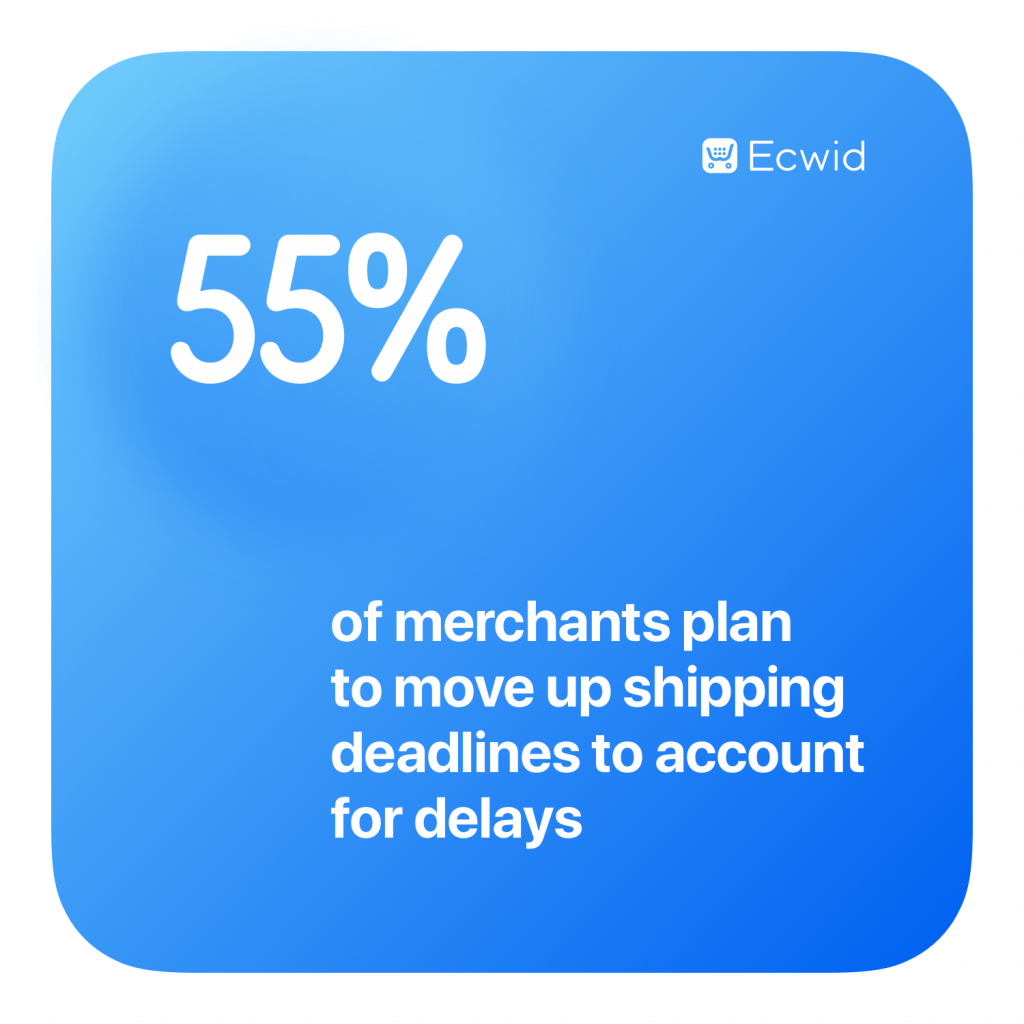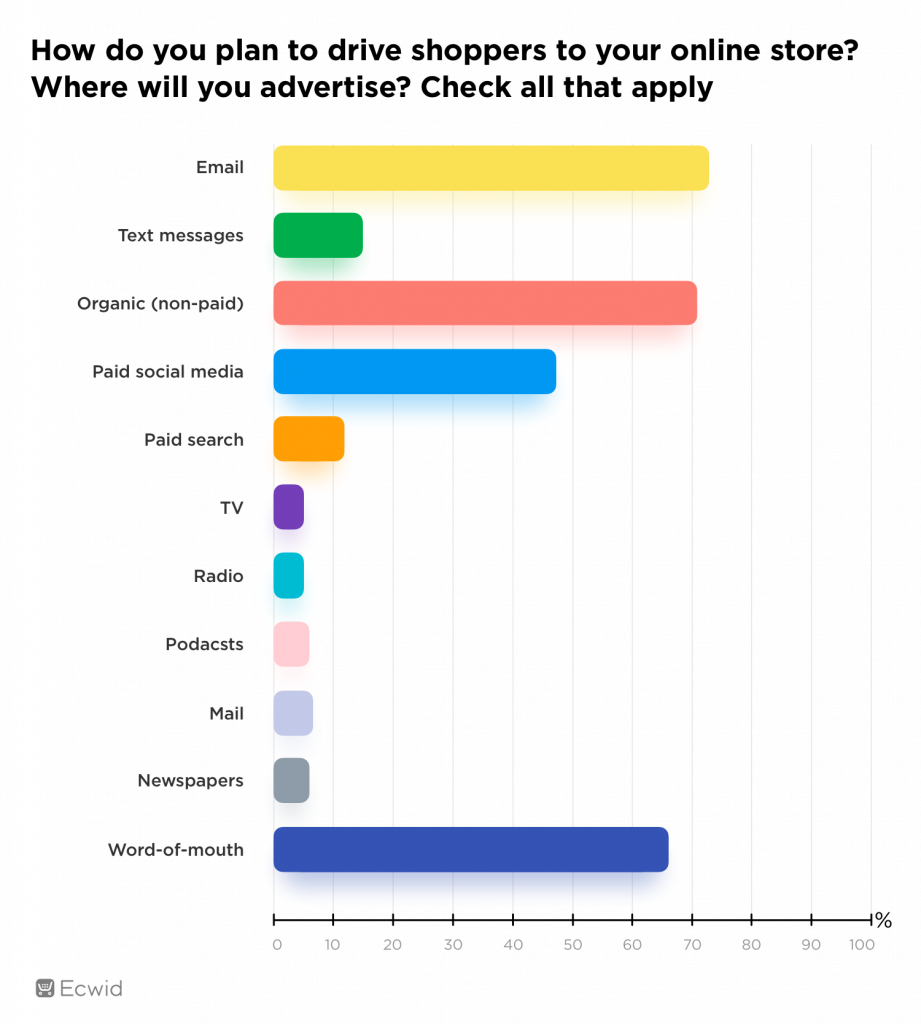
In October, we surveyed our merchant community to hear exactly how they’re approaching the holidays — focusing on plans for online sales, digital tools, and asking what exactly a predominately online Black Friday looks like for local retailers.
While small business owners are hopeful for a successful holiday season, many are looking for the most efficient ways to offer perks, discounts, and seamless shopping experiences — without investing additional financial resources into flashy holiday offers.
In this report, we examine the insights from nearly 200 small businesses, whose owners shared their expected challenges, priorities, and plans ahead of the holidays. Looking back at the past several months of economic uncertainty, we share perspectives and actionable tips on how small businesses can prepare for the crucial weeks ahead.
Contents:
- Surviving a Pandemic: The Impact of COVID-19 On Small Businesses
- It’s Time to Reinvest In Our Small Businesses and Local Entrepreneurs
- Planning for the Holidays: Merchants Weigh In on Seasonal Strategies
- Tips and Tricks for Holiday 2020: A Checklist for Success
Surviving a Pandemic: The Impact of COVID-19 On Small Businesses
Pandemic buying habits have drastically changed how consumers shop, and how small businesses grow. When the pandemic began to spread within the U.S, 55% of small businesses believed it would take six months to a year before the U.S. business climate returned to normal.

Now that we’re more than six months into limited quarantines and reduced in-store traffic, small businesses are fighting to make it into the new year. We’re in the midst of one of the most important fiscal quarters for the nation’s small businesses. While the holidays provide a natural boost in consumer spending, this holiday season won’t look the same for struggling small businesses. Let’s look back at the last several months.
Going digital
With 75% of SMBs reporting that COVID-19 has negatively impacted their businesses, by necessity, 2020 became the year that SMBs got aggressive about e-commerce. The ones that adopted and innovated early enough are still around, but the fight is far from over. To not only survive, but grow their businesses, hundreds and even thousands of businesses migrated online, earlier this spring— accelerating existing pre-pandemic trends. In fact, our merchant community at Ecwid saw a 300% increase in new signups in Q2, compared to the same time last year. As they experimented with online channels, Ecwid merchants saw a 50% increase in sales.

Store and restaurant owners have leaned heavily into e-commerce— many for the first time. Beyond migrating their products to digital storefronts, some merchants have even adjusted their products completely: with restaurants selling dinner kits, and even in-demand items like toilet paper and hand sanitizer, business owners have had to think creatively to retain customers.
The standout trend for SMBs that is here to stay is curbside pickup. While buy online, pickup in store, or BOPIS, was already a growing retail trend, mandatory store closures led to the accelerated adoption of curbside pickup across the nation. On Ecwid, total U.S. sales fulfilled via curbside pickup increased by 388%, since the beginning of the year. While we saw the strongest peak of curbside pickup adoption in May, Q3 had about about 2/3 of that level. As holiday shopping continues, the high volume of curbside pickup will continue to spike in a U-shaped trajectory.

Additionally, e-commerce features like gift cards and delivery have helped to ease the financial burdens faced by small businesses. Delivery, like curbside pickup, helped businesses fulfill orders at a time when in-store traffic was reduced or completely non-existent. Gift cards and vouchers enabled businesses to secure revenue in the immediate, even during times when services or goods were not available.
Success stories
Overall, Ecwid merchants saw a 114% and 71% YoY increase in orders and sales, respectively, during the first half of the year. From relying on social media— both paid and organic— to expanding physical storefronts in tandem with online momentum, here are a few merchants selling on Ecwid who have made the most of their interactions with at-home shoppers and the new buying priorities.
Julia Rose Boston stays social, but not distant, on Instagram:
During a time when in-person interactions are limited, brands have turned to social media to drive connectivity and reach consumers on their preferred platforms. Julia Carney is the brains behind luxury accessory and handbags company, Julia Rose Boston. With Humfrey Brandes, a senior product manager, they boosted her already established social media presence with a solid inventory management and sales foundation via her new online storefront.
By curating new collections, improving the check out experience, and using Instagram Stories to grab shoppers’ attention, Julia has been able to sustain her business selling new and pre-owned luxury goods.

Even while global supply chains impacted her pricing and procurement strategies, her team adjusted inventory to focus on more accessible stock. Her entire business is run on Instagram, and the majority of customers purchase on mobile. By connecting her social presence with her Ecwid storefront, Julia’s sales from April 2020 to June 2020 exceeded $3.5 million!
Julia relies on the personalized, not automated, customer interactions to foster relationships with customers.
Kissed By A Bee Brings organic growth to organic beauty:
Akilah Scott-Amos is the founder behind Texas-based, organic skincare and beauty business, Kissed By A Bee. After being laid off from a corporate role she held for many years, Akilah turned to ancestral herbalist practices learned from her family to launch her homemade skincare company.

Prior to the pandemic, Akilah relied on trade shows and events to secure about half of her income, and reach customers outside of her immediate area. Following her final show in February, in-person events were cancelled, and Akilah turned to online sales to expand her reach nationally.

Kissed by a Bee stand at a market
Known for her creative and eye-catching booth and tent designs, Akilah brings that same branding expertise to her online store. Without dedicating any of her marketing budget to paid social media, Akilah has seen a surge in business due to her marketing on owned channels— securing $80,000 in sales from April to June 2020. For the last six years, Akilah has worked out of her house, but recently expanded into a warehouse space that contains a small storefront. Now, she’s selling and growing across channels, online and in-store.

NanoSeptic cleans house selling sanitization tech:
NanoTouch Materials invented and manufactures a full line of NanoSeptic continuously self-cleaning surfaces.

Shop.nanoseptic.com
To accommodate the constant demand for their cleaning products, at the start of the pandemic, the NanoSeptic team added employees on a weekly basis— supporting those within the local workforce that had previously lost jobs due to pandemic-related closures.
The team automated multiple steps in the fabrication process— including the application of coatings, printing, cutting, counting, and sorting. NanoSeptic worked with their engineering company for two weeks to design and build an automated workflow for their manufacturing processes. Refining and building on to this system, the team expanded into a second automated line, focusing on NanoSeptic’s tubular door handle sleeves. And recently, they developed more automation to manufacture their new light switch covers. To support continued growth, the engineering company is currently building duplicates of all three manufacturing lines.
From February 2020 to March 2020, NanoSeptic saw a nearly 3000% spike in orders on their online store— with orders increasing almost another 60% and 100% in the following two months. By April, the order volume had increased so much that NanoSeptic was only able to keep the online store open for about two hours a day. While NanoSeptic actually had to limit store hours to best manage demand, they recouped enough revenue to begin the process of tripling their manufacturing facility in Forest, Virginia.
It’s Time to Reinvest In Our Small Businesses and Local Entrepreneurs
We’re at an inflection point for Main Streets across the nation. Because the pandemic accelerated so many digital trends for small businesses, it’s going to inform how they do business for months, and more likely, years to come.
Community support
Small businesses don’t just service communities, they are the community: local owners, staff, and shoppers are all impacted by the closures sweeping the small business sector. According to data from Yelp, 60% of pandemic-related business closures are now permanent. With community support, we can ensure those numbers don’t increase following the holidays.
When small businesses thrive, it’s felt across the economy. According to the U.S. Small Business Administration Office of Advocacy, SMBs have contributed to 65% of net new jobs created since 2000. Past recessions have shown us that while small businesses are usually the hardest hit, they are also some of the most impactful in influencing a recovery, by supporting local employment. In short, saving our post-pandemic economy is dependent on supporting small businesses today. Without the necessary SMB infrastructure in place in 2021, we can anticipate an even slower economic bounceback.
While new digital operations and limited government aid has helped to sustain small businesses in 2020, our small businesses need the support of local shoppers to help keep communities alive.
Bracing for winter woes
Pandemic buying habits and preferences are here to stay. Consumers and small businesses have grown accustomed to the ease-of-use and convenience of online shopping at the local level. Small businesses need to continue to meet the newly set expectations of their local shoppers, as they ramp up their holiday operations. That being said, many of the practices adopted during the spring and summer months of the pandemic will not be sustainable through the winter.
When you couple the cooling weather and the looming threat of a second COVID-19 outbreak, we have all the rationale we need to justify an aggressive holiday e-commerce strategy. More flexible solutions like outdoor seating and operations will become less popular once temperatures drop. That’s especially more likely in more pedestrian cities like New York.
This winter, small businesses are tasked with recreating the momentum and enthusiasm of the crucially important holiday season. Simultaneously, they are still combatting the economic effects of this year’s losses and staving off new ones. It’s a significant challenge, and, in order to rise to the occasion, small businesses nationwide will need to revamp their holiday strategies. Let’s take a look at how merchants selling on Ecwid plan to do just that.
Planning for the Holidays: Merchants Weigh In on Seasonal Strategies
Small business owners understand the significance of this holiday season on their ability to operate within the new year, but with limited budgets for holiday promotion, they need to be doubly thoughtful about holiday strategies. Here’s a glimpse at the numbers:
Small businesses see lasting effects of COVID-19 on holiday plans
Many new small businesses operating on Ecwid, seriously invested in e-commerce for the first time this year. Nearly half (49%) of our merchants surveyed built their online presence—shopping carts, marketplace integrations, and marketing tools— following the start of the COVID-19 pandemic.
For the businesses that were already online, they doubled down on online shopping. Now, more than three fourths (76%) of our merchants said that the COVID-19 pandemic affected their holiday plans, with 45% of those respondents saying the pandemic significantly impacted their holiday strategy.

Outside of the economic implications of the pandemic, the impact of COVID-19 has left many retailers understaffed ahead of an expected surge in holiday sales. After the pandemic stalled global supply chains and distribution processes, small businesses have struggled not only to stock their virtual shelves, but also get products to shoppers quickly.
Ahead of what will be the busiest online holiday season yet, the shipping capacity shortfall between Thanksgiving and Christmas could average 7 million packages daily, according to ShipMatrix, Inc. With confidence in shipping timelines waning, more than half (55%) of merchants plan to move up shipping deadlines to account for delays. While both consumers’ and merchants’ expectations around shipping plummett, most small businesses (87%) do not plan to increase seasonal staff to fulfill online orders— signifying lower resources to manage holiday online orders.

Take DIY Delish, a family-run brand of natural, dairy- and gluten-free cooking sauces, for example. They expect their line of simmer sauces to attract foodies and plant-based diet lovers, all season long. Based in Denver, DIY Delish already offers free shipping within Colorado. Founder Raj Harika shares that "For the holidays, we are working on special themed gift boxes, and will promote them across our social media and email marketing. We are giving people enough time and notice to buy these in advance." Whether it’s prep for a holiday dinner, or a gift for the amateur chef in your family, DIY Delish is getting ahead of chaotic shipping timelines.

Conservative discounts await Black Friday and Cyber Monday shoppers
Black Friday has always been a major shopping moment for big box retailers like Walmart, Target, and Best Buy; however, small businesses have struggled to compete with low prices. Instead, Small Business Saturday has created a space for local retailers during the unofficial kickoff to holiday shopping. This year Cyber Weekend will look different, given that holiday shopping began in early October.
Generally speaking, nearly half (44%) of consumers will start shopping earlier than last year, according to Listrak research. Based on current trends on Ecwid, apparel will lead holiday sales for small businesses through the holiday season, followed by food and beverage consumption— including restaurants and food delivery.
Merchants are planning for the bulk of their Black Friday and Cyber Monday sales to happen online, and are offering fewer in-store perks and experiences to drive online sales. In fact, only 15% of merchants expecting a spike in sales on Black Friday anticipate selling the majority of their products at their brick and mortar location.
Merchants who anticipate a spike in sales on Cyber Monday (85%) plan to sell the majority of their goods online. Additionally, merchants who anticipate a spike in sales on Small Business Saturday expect the majority of their sales to come online (78%) rather than through their physical stores (14%).
This year, 78% of our merchants surveyed plan to pursue sales or promotions for the holiday season. Specifically, half of our merchants plan to offer discounts for Black Friday and Cyber Monday, with 38% and 36% anticipating a spike in sales during that day. Nearly half (48%) plan to pursue Small Business Saturday promotions, and 41% expect a spike in sales on the day.
With fewer resources, we won’t see doorbuster deals from small businesses: less than 2% (1.6%) of merchants plan to offer deals greater than 50% off. Instead, many merchants (40%) plan to offer discounts between 11 – 25% off goods.

Of the merchants who anticipate a spike in sales on Black Friday and Cyber Monday, 53% and 50%, respectively, will offer discounts 11-25% off of regular prices. The percentage of merchants slips slightly for Small Business Saturday projections, with less than half (44%) of merchants anticipating a spike in sales on offering 11-25% off discounts.
Lastly, while the majority of merchants expect moderate discounts to drive a spike in sales, a minority (20%) plan to offer discounts on Cyber Monday without expecting an increase in sales. Holiday discounts have become a must-have to stay on consumers’ radar during the busy holiday season.
To meet consumer expectations for holiday deals around Black Friday and Cyber Monday, small businesses are offering small discounts to attempt to drive more traffic without cutting into important profit margins.
SMBs stick with the basics to drive holiday sales — leaving room for future tech innovation
Small business owners are caught in a tough dilemma: they need to offer exceptional and safe shopping experiences to gain enough revenue to continue into the new year, but they need to do so with very limited resources. To maximize their e-commerce and marketing strategies, small businesses are using tried and true practices to make the most of the holiday season.

For instance, more mainstream perks like free shipping and a free gift with purchase lead the pack on holiday offers— with 44% and 40% of merchants planning to offer those, respectively. On the other hand, more expensive options like price matching (6%) and free returns (7%) are less popular among merchants, this year.
When it comes to driving in-store traffic, email (73%), organic social media (70%), and word-of-mouth (66%) are the top three advertising strategies for today’s merchants. While, merchants are also increasingly experimenting with paid social media (47%), free and owned channels drive outreach strategies.

Overall, social media and large marketplaces still only make up a small portion of merchants’ primary selling channels— with 6% and 3% of respondents intending to sell the majority of their holiday products across each channel, respectively. We can expect small businesses to lean on essential services, and limited new digital tools, to reach shoppers.
Now, even the most reluctant small businesses understand how easy it is to sell online, but most still have a long way to go before they reap the full benefits of a comprehensive e-commerce strategy. For the small businesses that are able to expand their e-commerce offerings within the new year, we anticipate more experimentation with new payments options as well as e-commerce features.
Merchants are hopeful, but they’re not wearing rose-colored glasses
In October, the National Federation of Independent Businesses (NFIB) Optimism Index rose 3.8 points to 104.0 in September, which is a historically high reading. At the same time, the NFIB Uncertainty Index increased 2 points to 92, up from 75 in April. As small businesses maintain hope for the holiday season, there’s still a lack of clarity around what merchants can expect from upcoming sales.
Across Ecwid, the majority of our merchants expect to see higher sales during the holidays. Less than 10% of our merchants predict that sales will be significantly lower this season. Most merchants (30%) expect sales to be somewhat higher, and 11% expecting significantly higher results.
There is a small minority of merchants (13%) planning to increase their seasonal staff to fulfill online orders— showcasing some optimism around sales growth. Merchants that are investing the most in customer engagement strategies, such as live customer support, are investing more time and resources in providing individualized and personal shopping experiences, a key differentiator for small businesses, compared to larger retailers.
Interestingly, although merchants have limited resources for their holiday promotions, 61% of small business owners plan to expand their product selection for the holidays. In line with broader trends, these merchants plan to use free or affordable advertising tools such as email (75%), organic social media (73%), and word-of-mouth (70%) to drive traffic to their online stores. On the other hand, of the merchants who plan to offer fewer products for the holidays, 90% say that COVID significantly impacted their holiday strategy.
As Bianca Burns, partner at Plant Economy, purveyor of plant products for plant people, explains, her team anticipates a spike in orders, based on customer feedback and buying patterns. "Our organic marketing efforts primarily drive sales for our business at the moment, but for the holidays, we are taking it a step further. We are excited to offer exclusive products and bundle packages, run various holiday promotions, and increase on- and offline engagement. We are also working to tailor our approach to paid advertising in order to cut through some of the holiday noise."
Tips and Tricks for Holiday 2020: A Checklist for Success
Now that we’ve established how important this holiday season is for small businesses, here’s a list of digital best practices to make the most of the biggest online holiday season yet:
- Deck the digital halls. From creative window displays to a full Santa’s workshop, small businesses always cultivated their own in-store traditions. This year, SMBs need to update their digital storefronts and social media profiles for the holidays. Try seasonal designs and add a "Holiday Gifts" section.
- Diversify your marketplaces. Behemoth marketplaces like Amazon and eBay extend the reach of your consumer base, but they also increase competition with other sellers. Look beyond mega-marketplaces, and turn to those that cater to small business owners and makers— such as Uncommon Goods and Etsy.
- Personalize. Personalize. Personalize! SMBs are built by and for local community members. For that reason, they will always create more personalized experiences than larger retailers. Lean on your community relationships and presence to build meaningful and personal experiences as well as products.
- Make a subscriber list, and check it twice. Now is the time to reach out and put your holiday marketing to work. Focus on targeting the right customers at the right time. Craft holiday-specific newsletters with updated deals and gift guides, A/B test email subject lines to maximize open rates, and partner with email service providers like Mailchimp to make automated emails more shoppable.
- Stay connected. Meet your shoppers where they are — on their phones — and, more specifically, on social media. Whether you’re selling, advertising, or handling customer service inquiries, stay responsive and continue to highlight product inventory and updates. Plus, you can use your profiles to highlight outstanding customer testimonials and reviews.
- Make sure all presents make it in time. Leave no gift undelivered! Upgrade your shipping and logistics by integrating your online store with a shipping tech provider (e.g. Shippo, Easyship, or Ship Station). Based on your provider, you can track packages, provide proactive delivery updates, and even extend your branding with customizable and seasonal packaging.
- Spread the holiday cheer. Ultimately, the holidays are about togetherness and supporting each other. During a time when many families will be separated for the holidays, think of creative ways to host virtual events or sell activity kits that can help bring families together virtually or connect your shoppers for real-time engagement.
*The small business holiday e-commerce survey was fielded by Ecwid via Survey Monkey from October 5-12, 2020, among a national sample of 192 small business owners. The interviews were conducted online. Results from the full poll have a margin of error of 7%.
via https://www.aiupnow.com
Kristen Pinkman, Ecwid Team, Khareem Sudlow
